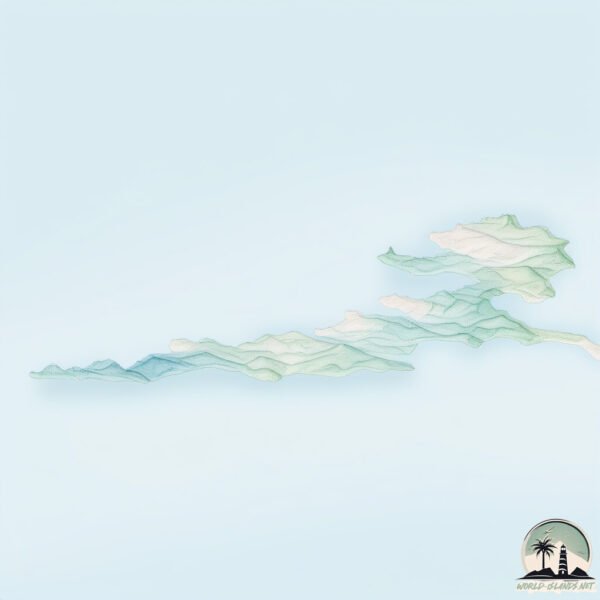Welcome to Atka , a Polar island in the Bering Sea, part of the majestic Pacific Ocean. This guide offers a comprehensive overview of what makes Atka unique – from its geography and climate to its population, infrastructure, and beyond. Dive into the details:
Geography and size of Atka
Size: 1049 km²Coastline: 910 kmOcean: Pacific OceanSea: Bering SeaContinent: North America
Atka is a Very Large Island spanning 1049 km² with a coastline of 910 km.
Archipel: Aleutian Islands – A chain of islands stretching from Alaska to Russia, known for their rugged beauty, abundant wildlife, and volcanic activity.
Tectonic Plate: North America – Covers North America and parts of the Atlantic and Arctic Oceans, characterized by diverse geological features and varying levels of seismic activity.
The geographic heart of the island is pinpointed at these coordinates:
Climate and weather of Atka
Climate Zone: PolarClimate Details: TundraTemperature: Cold
Climate Characteristics: The tundra climate features long, extremely cold winters and short, cool summers. Vegetation is limited to mosses, lichens, and small shrubs due to the low temperatures and short growing seasons. Biodiversity is low, but some specialized species thrive.
Topography and nature of Atka
Timezone: UTC-10:00Timezone places: Pacific/HonoluluMax. Elevation: 1533 m Korovin VolcanoMean Elevation: 240 mVegetation: Herbaceous CoverTree Coverage: 16%
The mean elevation is 240 m. Dominating the island’s landscape, the majestic “Korovin Volcano” rises as the highest peak, soaring to impressive heights. The island is characterized by Plateau: Elevated flatlands rising sharply above the surrounding area, with a maximum elevation over 500 meters but a mean elevation less than 300 meters, forming unique highland areas on islands.
Dominating Vegetation: Herbaceous Cover
Vegetation: 14 vegetation zones – Exceptionally Diverse Island
Infrastructure and Travelling to Atka
Does the island have a public airport? no .
Does the island have a major port? yes .
The mean population of Atka is 0 per km². Atka is Uninhabited. The island belongs to United States of America .
The name of the island resonates across different cultures and languages. Here is how it is known around the world: Arabic: أتكا; German: Atka Island; Spanish: Isla Atka; French: Atka; Portuguese: Ilha Atka; Russian: Атка; Chinese: 阿特卡島
Continuing your journey, Tagalak is the next notable island, situated merely km away.
A Place Where Time Stands Still: Aleutian Islands
Thank you so much for joining me on this adventure. Please don't forget to like this video, and subscribe to my YouTube channel, ...
A Place Where Time Stands Still: Aleutian Islands
Thank you so much for joining me on this adventure. Please don't ...
Thank you so much for joining me on this adventure. Please don't forget to like this video, and subscribe to my YouTube channel, ...
A Glimpse into a Remote Aleut Village in Alaska
Atka village 11000 miles from Anchorage. A short 2 night stop to ...
Atka village 11000 miles from Anchorage. A short 2 night stop to explore the village. There is a gorgeous orthodox church. A small ...
Atka the Aleutian islands #atka #aleutians
Our visit to Atka in the Aleutian Islands, Alaska.
Our visit to Atka in the Aleutian Islands, Alaska.
United States of America is classified as Developed region: G7: Group of Seven – Major advanced economies, including Canada, France, Germany, Italy, Japan, the United Kingdom, and the United States. The level of income is High income: OECD.
News – Latest Updates and Headlines from Atka
Stay informed with the most recent news and important headlines from Atka. Here’s a roundup of the latest developments.
Loading...
Social Media Posts about Atka
Loading...
Please note: The data used here has been primarily extracted from satellite readings. Deviations from exact values may occur, particularly regarding the height of elevations and population density. Land area and coastline measurements refer to average values at mean high tide.

